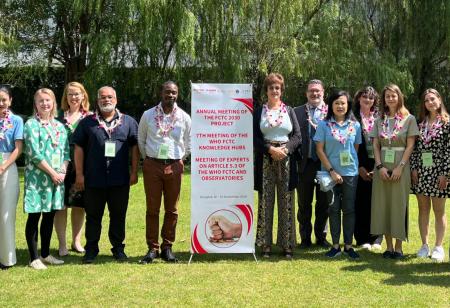
Blogpost: Putting a spotlight on the economics of tobacco control - 3 July 2017

By Zunda Chisa
The economics of tobacco control is not a very widely known, let alone understood, field on the African continent. The average public health specialist working on ways to reduce tobacco consumption in their country is often faced with resistance or ridicule or both when trying to implement some of the basic recommendations of the WHO’s Framework Convention on Tobacco Control (WHO FCTC). To be fair, I did not really know much about it until about two and half years ago while studying for my Masters. I met with a fellow Zambian colleague over lunch who happened to be working in the field and was intrigued by the issues he was talking about. I asked so many questions and quickly realized it was a fascinating field to get into. Suddenly, I had ideas for my Masters’ thesis topic and was looking forward to getting involved in any way I could.
So what is it really all about? This, economics of tobacco control? Well, in a nutshell, it is the use of some of the most basic economic principles to better understand and curb the use of tobacco around the world. It employs tools such as demand and supply concepts to model how the market for tobacco functions. Understanding how this market functions is pivotal to developing ways of reducing current consumption and preventing new, young, consumers from initiating tobacco use. In addition, it could help demystify emerging trends such as the use of e-cigarettes and the danger or opportunity they present.
Bringing the spotlight on tobacco control in general on the continent is extremely important, given the broad range of negative economic and social consequences. Tobacco taxation, long touted as the most effective tool in the tobacco control arsenal, and for good reason, is a case in point. It has been well studied, in a variety of settings, using various techniques over time and has been shown time and again to have very specific effects under specific circumstances. This has led to recommendations for what structures work best and what rates are most effective. Unfortunately, this has not been as widely adopted across the continent, more than a decade after the WHO FCTC came into force.
At the global level, the SDGs include tobacco and NCDs in recognition of the broad impacts on inequality and poverty. Price and tax measures were further cited in the Addis Ababa Agenda of the Third International Conference on Financing for Development as a viable alternative for domestic resource mobilization. These are steps in the right direction, and should be the basis for momentum to be built for regional bodies such as ECOWAS, WEAMU, COMESA, SADC and others to better define regional goals for tobacco control, particularly taxation. The role of these regional bodies in increasing the visibility of the need for concerted and well-coordinated tobacco control efforts could be invaluable. At the moment, some of these organizations have efforts to control other public health concerns. For instance, SADC has the Malaria Elimination 8 or E8 project which seeks to eliminate malaria in 8 of the countries within the regional body. Similarly coordinated efforts in tobacco control would greatly accelerate the adoption of the right tobacco control policies in the region and close any loopholes for the industry to exploit.





